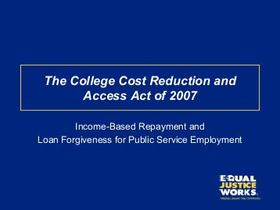There are several ways to pay for a community college education. Community colleges offer affordable educational options, and various funding sources and strategies are available to help cover the costs.
Here are some common methods:
Grants and Scholarships
Federal Grants
The U.S. Department of Education offers need-based grants such as the Pell Grant, Federal Supplemental Educational Opportunity Grant (FSEOG), and the Iraq and Afghanistan Service Grant. These grants do not require repayment.
State Grants
Many states provide financial assistance programs specifically for community college students. Check with your state's higher education agency or financial aid office for available grants.
Institutional Scholarships
Community colleges often offer their own scholarships based on academic achievement, financial need, or specific areas of study. Research and apply for scholarships offered by your college.
Financial Aid
Federal Student Aid
Complete the Free Application for Federal Student Aid (FAFSA) to determine eligibility for federal student aid programs, including grants, work-study opportunities, and low-interest student loans.
Work-Study Programs
Participate in a Federal Work-Study program, which provides part-time employment opportunities on or off campus to help cover educational expenses.
Employer Tuition Assistance
Some employers offer tuition assistance or reimbursement programs to employees pursuing higher education. Inquire with your employer's human resources department to explore such opportunities.
Education Tax Credits and Deductions
American Opportunity Tax Credit (AOTC)
This tax credit provides up to $2,500 per year for eligible education expenses, including tuition, fees, and course materials.
Lifetime Learning Credit (LLC)
This credit offers up to $2,000 per year for qualified education expenses, including tuition and fees.
Tuition and Fees Deduction
Deduct up to $4,000 in qualified education expenses from your taxable income.
Savings and Personal Funds
Utilize personal savings, such as a college savings account (e.g., 529 plan), to cover tuition and related expenses.
Set aside a portion of your income specifically for educational expenses.
Community College Payment Plans
Many community colleges offer payment plans that allow you to divide your tuition and fees into manageable installments. This can help spread out the cost over the course of a semester or academic year.
External Scholarships and Grants
Explore external scholarship opportunities offered by organizations, foundations, community groups, or private companies. Websites like Fastweb and Scholarships.com can help you find relevant scholarships.
Student Loans
If necessary, consider federal student loans, such as Direct Subsidized or Unsubsidized Loans, which generally offer favorable interest rates and flexible repayment options. However, be sure to borrow responsibly and consider loan repayment implications.
Remember, it's essential to thoroughly research and understand the terms and conditions associated with each funding option. Then, consult with the financial aid office at your community college for personalized guidance and information about additional local or institutional resources that may be available.
This video reviews several ways to pay for community college.
The difference between scholarships and grants.
Scholarship
A scholarship is a form of financial aid awarded to students based on various criteria, such as academic achievement, talent, community involvement, or specific characteristics. Scholarships are typically merit-based, meaning they are awarded to students with exceptional skills, achievements, or potential in a particular field of study or interest. Educational institutions, private organizations, foundations, businesses, or government agencies typically offer scholarships.
Key characteristics of scholarships include:
Merit-Based
Scholarships are typically awarded based on a student's academic performance, talent, leadership abilities, extracurricular activities, or other specific criteria the scholarship provider determines.
Competitive
Scholarships often have a competitive application process, requiring students to submit essays, recommendation letters, portfolios, or other documentation to demonstrate their qualifications.
No Repayment
Scholarships are a form of gift aid, meaning they do not need to be repaid. Instead, recipients are only obligated to return the funds if they fail to meet specific requirements, such as maintaining a certain GPA or fulfilling service obligations associated with the scholarship.
Specific Purpose
Scholarships may have specific purposes or restrictions. For example, some scholarships may be limited to students pursuing a particular field of study, underrepresented groups, or individuals from specific geographic regions.
Grant
A grant, similar to a scholarship, is a form of financial aid designed to assist students in paying for their education. However, grants are typically need-based, meaning they are awarded to students who demonstrate financial need based on their family income, assets, and other factors. Grants can be provided by federal, state, or institutional sources and are aimed at making education more accessible to students from low-income backgrounds.
Key characteristics of grants include:
Need-Based
Grants are primarily awarded based on a student's financial need, which is determined through the Free Application for Federal Student Aid (FAFSA) or other application processes.
Income and Asset Evaluation
Grant eligibility is often determined by analyzing a student's family income, assets, and household size to assess their financial need.
No Repayment
Like scholarships, grants are considered gift aid and do not require repayment. They provide financial assistance without creating a debt burden for the recipient.
Government or Institutional Sources
Federal, state, or institutional entities, such as colleges, universities, or private organizations, can award grants. Examples of grants include the Pell Grant, Federal Supplemental Educational Opportunity Grant (FSEOG), or institutional grants provided by colleges.
It's important to note that the specific terminology and definitions of scholarships and grants may vary based on different institutions, organizations, or regions. However, the general distinction lies in the basis of the award (merit-based vs. need-based) and the criteria used for determining eligibility and selection.
This video offers another look at how to pay for community college.
American Opportunity Tax Credit (AOTC) and the Lifetime Learning Credit (LLC)
American Opportunity Tax Credit (AOTC)
The American Opportunity Tax Credit is a federal tax credit designed to assist students and families with the cost of higher education.
Here are the key aspects of the AOTC.
Purpose and Eligibility
The AOTC aims to offset qualified education expenses incurred during the first four years of post-secondary education, including undergraduate studies.
To be eligible, the student must pursue a degree or recognized educational credential, enroll at least half-time in an eligible educational institution, and not have felony drug convictions.
Maximum Credit Amount
The maximum annual credit amount is $2,500 per eligible student. The credit is calculated as 100% of the first $2,000 of qualified education expenses paid plus 25% of the next $2,000, totaling a maximum credit of $2,500.
Qualified Education Expenses
Qualified education expenses include tuition, fees, and course materials required to enroll or attend an eligible institution. Expenses such as room and board, transportation, and non-educational fees do not qualify for the credit.
Income Phase-Out
The AOTC has income limitations. The credit starts to phase out for taxpayers with a modified adjusted gross income (MAGI) above a certain threshold. The phase-out range for the AOTC is modified annually and subject to inflation adjustment.
Partial Refundability
Up to 40% of the AOTC (maximum $1,000) is refundable, meaning that even if the taxpayer does not owe any taxes, they may still receive a refund of the refundable portion of the credit.
Lifetime Learning Credit (LLC)
The Lifetime Learning Credit is another federal tax credit available to help offset the cost of higher education, including undergraduate and graduate studies.
Here are the key aspects of the LLC:
Purpose and Eligibility
The LLC is designed to assist individuals in pursuing post-secondary education and acquiring new skills to enhance their career prospects. It is available to eligible students taking at least one course at an eligible educational institution.
Maximum Credit Amount
The LLC allows a maximum annual credit of 20% of the first $10,000 of qualified education expenses paid, with a maximum credit of $2,000 per tax return.
Qualified Education Expenses
Qualified education expenses for the LLC include tuition, fees, and other related expenses necessary for enrollment or attendance at an eligible institution.
Similar to the AOTC, expenses like room and board, transportation, and non-educational fees are not eligible for the credit.
Income Phase-Out
The LLC also has income limitations. The credit begins to phase out for taxpayers with a MAGI above a certain threshold.
Similar to the AOTC, the phase-out range for the LLC is adjusted annually and is subject to changes based on inflation.
Non-Refundable
Unlike the AOTC, the LLC is non-refundable, meaning it can reduce taxes owed but not generate a refund if the credit exceeds the tax liability.
It's important to note that tax laws and regulations can change over time, so it's recommended to consult with a tax professional or refer to the Internal Revenue Service (IRS) guidelines for the most recent information and eligibility requirements for the American Opportunity Tax Credit and Lifetime Learning Credit.
Questions? Contact us on Facebook. @communitycollegereview
#Financialaid #Scholarships #Grants #WorkStudyPrograms #SavingsStrategies















